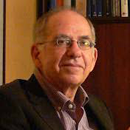Jean-Paul Midant, born in 1957, is professor of architectural history and culture at the School of Architecture at Nancy (France). He has collaborated on many books on the subject both in France and in other countries.
During the first American intervention, the architecture of the twentieth century begins in Cuba with the creation in 1900 of the Schools of Civil Engineering and of Architecture at the University of Havana and in 1902 of the School of Arts and Crafts. These schools break the island's bonds with Spain, and its capital city becomes the island's threshold to the world of technological thinking. From these schools, in turn, professionals emerge, that permeated by influences from abroad, will timidly define Cuban versions of the styles in vogue. The first thirty years must pass before the resolution of the few architects practicing in the island is bolstered by the work of a Franco-Cuban team (Raul Otero, Jose M. Bens Arrate, Felix Cabarrocas, Eugenio Rayneri, Théo Levau, Jean Labatut and J. C. N. Forestier) around the most emblematic Beaux Arts style project of of the time: the National Capitol. Built with the support of the Purdy & Henderson engineering company's eminent structural technology and inaugurated in 1929, its refined and pragmatic eclecticism points to the path that personalities like Emilio de Soto, Evelio Govantes, Luis Bay Sevilla and Pedro Martinez lnclán will follow.  E. Rodríguez Castells, Edificio Bacardí. Photo: Christopher Michel. E. Rodríguez Castells, Edificio Bacardí. Photo: Christopher Michel.Modernity, however, arrives at Havana five years after the Exhibition of Decorative Arts in Paris, with the construction of the Bacardi company's headquarters (1930), by Esteban Rodriguez, Rafael Fernandez and Jose Menendez, a small skyscraper entirely covered with polychrome ceramics, while the first signs of functionalism start to show up at the end of the decade in buildings such as the Fausto movie theatre (1938) by Saturnino Parajon, the America building (1941) by Fernando Martinez and Pascual Rojas or the San Lazaro street apartment building (1944), by Manuel Copado.  M. Parajón, Fausto Theater. Photo: C.Briggs. M. Parajón, Fausto Theater. Photo: C.Briggs. M. Copado, Solimar Building. Photo: C. Brittain. M. Copado, Solimar Building. Photo: C. Brittain.This movement is supported by a strong pedagogical activity from architects and historians as Eugenio Batista, Mario Romañach and Joaquín Weiss, who try to adapt contemporary precepts to the local culture and climate conditions, as Eugenio Batista's own residence (1944) and the Cueto house (1949) by Mario Romañach make evident. A revolt in the School of Architecture (1947) parallel to a memorable visit of Walter Gropius to Havana (1948) announces the extremely prolific fifties in a city in full transformation process.  M. Romañach, Casa Noval Cueto. Source: C. A. Fleitas. M. Romañach, Casa Noval Cueto. Source: C. A. Fleitas.The Cabaret Tropicana (1951) by Max Borges, with its vaults "under the stars" and the skyscrapers Odontológico (1952) by Nicolas Quintana, with its facade composed of brise-soleils, and FOCSA (1956) by Ernesto Gómez Sampera, rising to thirty-five floors then become symbols of the modern challenge.  M. Borges, Tropicana Cabaret. Source: University of Havana. M. Borges, Tropicana Cabaret. Source: University of Havana.The construction of the Havana Hilton Hotel (1958, currently Habana Libre-Guitart) by Welton Becket in association with Nicolás Arroyo and Gabriela Menéndez, a twenty floor tower occupying an entire city block, shall configure a destination point as well as an origin for Havana's new city center.  W. Becket, Havana Hilton Hotel. W. Becket, Havana Hilton Hotel.Parallel to these events a certain return to indigenous values is noted in a younger generation reticent to technocracy, as shown by Ricardo Porro -recently back from Europe- in his project for the Ennis Villa (1953), Emilio del Junco in his own home (1957) and Frank Martinez in the Wax residence (1958).  R. Porro, Ennis House. Photo P. Austen. R. Porro, Ennis House. Photo P. Austen. E. del Junco residence. Photo: E. & P. del Junco. E. del Junco residence. Photo: E. & P. del Junco. Frank Martínez, Stanley Wax residence. Source: C. A. Fleitas. Frank Martínez, Stanley Wax residence. Source: C. A. Fleitas. | The political transformations taking place on the island since 1959 produced a strong impact, not surprisingly, in the architectural situation. While a large part of the professionals migrate to the United States, some architects arriving into maturity take advantage of the heroic and optimistic moment to express themselves in a fresh and original language.  R. Porro. School of Fine Arts. Photo A. Mallol R. Porro. School of Fine Arts. Photo A. MallolThis lapse of a happy but brief euphoria is embodied in the project for the Schools of Art (1961) built in the grounds of the former Country Club, west of Havana, designed by Ricardo Porro (School of Fine Arts and Modern Dance, inaugurated in 1965) and the Italian architects Roberto Gottardi and Vittorio Garatti (Schools of Music, Ballet and Theatre, abandoned unfinished).  V. Garatti, Ballet School. Source: John Loomis, Revolution of Forms. V. Garatti, Ballet School. Source: John Loomis, Revolution of Forms.Built with the collaboration of a team of young architects, students and masons, with the creativity and freshness of these buildings the full force of the cultural mix implied by social change unfolds. Their opulent and sensual architecture stems from precariousness with the deployment of its Catalan vaults covering organic forms engulfed in a luxuriant nature. Judged with contempt and distrust by those in power, this path will soon be marginalized in favor of a massive industrialization of construction. Beginning in the mid-sixties, with the three schools of architecture and specialized publications under their control and the professionals assigned to state building design enterprises, every architectural attempt that does not conform to the norms becomes extremely difficult if not impossible.  J. Campos, Cuba Pavilion. J. Campos, Cuba Pavilion. F. Salinas, Cuban Embassy, Mexico. F. Salinas, Cuban Embassy, Mexico.However the architectural creative will, a victim of technocratic technicism, has been able to challenge, at every favorable opportunity, even in isolated works, the official bureaucracy's extreme intolerance, as can be seen in the cases of the E. J. Varona Municipal Library (1963) by Arnaldo Sicilia, in Marianao, the Cuba Pavilion (1963) by Juan Campos in Vedado, the Embassy of Cuba in Mexico (1976) by Fernando Salinas, the Vocational School (1977) by Reinaldo Togores in Camagüey, the Cultural Center (1978) by Walter Betancourt in Velasco, etc.  W. Betancourt, Velasco Cultural Center. W. Betancourt, Velasco Cultural Center.The latest generation of architects tries to overcome its isolation, proposing on the one hand completely utopian projects, and on the other transforming the ideas of postmodernity into the daily reality of the tourism industry, as shown in José A. Choy's proposal for the Hotel Santiago (1991) in Santiago de Cuba or in the Hotel Caimanera (1992) by Jorge Callico in Guantanamo.  J. Choy, Hotel Santiago. Photo: IPAAT J. Choy, Hotel Santiago. Photo: IPAAT J. Callico, Hotel Caimanera, Guantánamo. J. Callico, Hotel Caimanera, Guantánamo.Different proposals in the field of urbanism have taken place in Havana since J. C. N. Forestier's 1926 plan, with its network of radial and concentric avenues around a big park and a new urban center, followed by the much discussed J. L. Sert and Lester Wiener's 1956 plan, which conceived an artificial island opposite the old urban center, half devastated by the proposed new streets and parks.  J. L. Sert and L. Wiener, Havana Pilot Plan. Source: R. Fornés J. L. Sert and L. Wiener, Havana Pilot Plan. Source: R. FornésFortunately not implemented, this plan gave impetus however to the project built across the bay by Fernando Salinas in 1963. In a more modest and realistic scale is the 1988 project for the district of Arboledas designed by a Cuban-American team which proposed, as a counterpoint to the prevailing dogmas of large prefabricated panel buildings construction, a development respectful of the forest environment, using traditional masonry techniques implemented by self-construction teams.  H Rorick et al. Las Arboledas. Photo: D. Glez. Couret. H Rorick et al. Las Arboledas. Photo: D. Glez. Couret. |




 R. Togores, Camagüey Vocational School.
R. Togores, Camagüey Vocational School.